-
 Bitcoin
Bitcoin $118300
-1.72% -
 Ethereum
Ethereum $3591
-0.69% -
 XRP
XRP $3.478
-3.53% -
 Tether USDt
Tether USDt $1.001
-0.01% -
 BNB
BNB $737.7
-0.54% -
 Solana
Solana $177.3
-2.40% -
 USDC
USDC $0.9999
-0.01% -
 Dogecoin
Dogecoin $0.2538
7.04% -
 TRON
TRON $0.3256
-0.85% -
 Cardano
Cardano $0.8332
-3.48% -
 Hyperliquid
Hyperliquid $44.80
-3.30% -
 Stellar
Stellar $0.4672
-6.09% -
 Sui
Sui $3.828
-5.98% -
 Chainlink
Chainlink $18.15
-3.41% -
 Hedera
Hedera $0.2655
-7.16% -
 Bitcoin Cash
Bitcoin Cash $517.5
-0.64% -
 Avalanche
Avalanche $23.89
-2.37% -
 Shiba Inu
Shiba Inu $0.00001519
-0.45% -
 UNUS SED LEO
UNUS SED LEO $8.973
0.13% -
 Toncoin
Toncoin $3.211
-2.54% -
 Litecoin
Litecoin $103.5
-3.58% -
 Polkadot
Polkadot $4.313
-3.90% -
 Uniswap
Uniswap $10.31
0.67% -
 Monero
Monero $325.4
-2.88% -
 Bitget Token
Bitget Token $5.049
3.51% -
 Ethena USDe
Ethena USDe $1.002
0.04% -
 Pepe
Pepe $0.00001346
-2.96% -
 Dai
Dai $0.9999
-0.02% -
 Aave
Aave $322.1
-2.93% -
 Bittensor
Bittensor $411.9
-4.70%
Why is the multi-threaded processing capability of graphics cards suitable for mining?
GPUs excel at cryptocurrency mining due to their parallel processing capabilities. Their numerous cores simultaneously handle hashing algorithms' independent operations, dramatically speeding up the mining process compared to CPUs. However, factors like memory bandwidth, cooling, and software optimization significantly influence efficiency.
Mar 19, 2025 at 05:07 pm

Key Points:
- Graphics cards (GPUs) excel at parallel processing, a key requirement for cryptocurrency mining algorithms.
- The architecture of GPUs, with their numerous cores, allows for simultaneous calculations, significantly speeding up the mining process compared to CPUs.
- Hashing algorithms used in Proof-of-Work cryptocurrencies are highly parallelizable, making GPUs ideal for this task.
- The higher the processing power of a GPU (measured in compute units and memory bandwidth), the faster it can mine cryptocurrencies.
- GPU mining's efficiency is heavily reliant on specific algorithms and the miner's ability to optimize their software and hardware.
Why is the Multi-Threaded Processing Capability of Graphics Cards Suitable for Mining?
Cryptocurrency mining, particularly for Proof-of-Work (PoW) coins, involves solving complex computational problems. The first miner to solve the problem gets to add the next block to the blockchain and receives a reward in cryptocurrency. This process demands immense processing power. This is where the multi-threaded processing capability of graphics cards (GPUs) becomes crucial.
Unlike central processing units (CPUs), which are designed for sequential tasks, GPUs are built for parallel processing. They possess hundreds or even thousands of smaller, more specialized processing cores. This architecture allows them to tackle multiple calculations simultaneously, a significant advantage in the context of cryptocurrency mining.
The algorithms used in PoW consensus mechanisms, such as SHA-256 used by Bitcoin, are inherently parallelizable. These algorithms involve repeated hashing operations, each independent of the others. GPUs can perform these hashing operations in parallel across their numerous cores, dramatically accelerating the mining process. A single GPU can often outperform hundreds of CPUs in mining speed.
The efficiency of a GPU in mining is directly related to its processing power. Key metrics include the number of CUDA cores (Nvidia) or stream processors (AMD), clock speed, and memory bandwidth. Higher values in these metrics translate to faster hashing speeds and thus, a higher probability of successfully mining a block.
GPU memory bandwidth plays a crucial role as well. The hashing process requires constant data transfer between the GPU's memory and its processing cores. A higher memory bandwidth ensures that data can be accessed and processed quickly, preventing bottlenecks that can hinder mining performance.
Mining software also plays a crucial role in harnessing the full potential of a GPU's multi-threaded capabilities. Well-optimized mining software can efficiently distribute tasks across all available cores, maximizing throughput. Poorly optimized software, on the other hand, can lead to underutilization of the GPU's resources, resulting in slower mining speeds.
The specific cryptocurrency being mined also influences GPU suitability. Different cryptocurrencies utilize different hashing algorithms, some being more parallelizable than others. GPUs are particularly well-suited for algorithms that can effectively leverage their parallel processing architecture. Certain algorithms might favor ASICs (Application-Specific Integrated Circuits) over GPUs for maximum efficiency.
Furthermore, the profitability of GPU mining is heavily influenced by factors beyond the GPU's capabilities. The difficulty of the mining network, the price of the cryptocurrency, and the cost of electricity all impact the overall profitability of the operation.
How does the number of cores affect mining speed?
More cores generally mean faster mining. Each core can work on a separate part of the hashing problem, leading to faster overall completion. However, other factors like clock speed and memory bandwidth also significantly impact performance.
What is the role of GPU memory in mining?
GPU memory acts as a temporary storage for the data being processed. Faster memory allows for quicker data access and transfer between the cores and memory, preventing bottlenecks and improving overall mining speed.
Are all GPUs equally effective for mining?
No, GPUs vary significantly in their mining performance. High-end gaming cards with more cores, higher clock speeds, and larger memory bandwidths are generally more efficient than lower-end cards. Furthermore, the specific algorithm used for mining plays a role in determining the relative effectiveness of different GPUs.
Can I use multiple GPUs for mining?
Yes, using multiple GPUs is common in cryptocurrency mining. This significantly increases the overall hashing power and the chances of successfully mining a block. However, managing multiple GPUs requires appropriate hardware and software configurations.
What are the limitations of using GPUs for mining?
While GPUs are effective, they are not the most efficient solution for all cryptocurrencies. Some algorithms are better suited to ASICs, specialized hardware designed specifically for mining. GPUs also consume significant amounts of electricity, impacting the profitability of mining operations. The increasing difficulty of many networks also necessitates more powerful and efficient hardware to remain competitive.
How does GPU cooling affect mining performance?
GPUs generate significant heat during mining operations. Effective cooling is crucial to prevent overheating and potential damage to the GPU. Overheating can lead to thermal throttling, reducing the GPU's performance and mining speed.
What are the software requirements for GPU mining?
Specific software is needed to control and manage the mining process on GPUs. This software usually includes drivers, mining software (like Claymore's Dual Miner or TeamRedMiner), and potentially configuration files for optimal settings. The choice of software depends on the specific cryptocurrency being mined and the GPU being used.
Disclaimer:info@kdj.com
The information provided is not trading advice. kdj.com does not assume any responsibility for any investments made based on the information provided in this article. Cryptocurrencies are highly volatile and it is highly recommended that you invest with caution after thorough research!
If you believe that the content used on this website infringes your copyright, please contact us immediately (info@kdj.com) and we will delete it promptly.
- XRP Mining for Passive Wealth: Is It the 2025 Crypto Gold Rush?
- 2025-07-19 22:50:12
- India's Wealthy Embrace Crypto: A New Era of Digital Investment
- 2025-07-19 22:30:12
- XRPL's TVL Surge: DeXRP's Ambitious DEX and SUI's Rise
- 2025-07-19 22:50:12
- Donkey Kong Ranked Games: From Arcade King to Switch 2 Bananza!
- 2025-07-19 22:30:12
- Shiba Inu, Ethereum Classic, and Remittix: Which Crypto Will Dominate?
- 2025-07-19 20:48:26
- TOKEN6900 Presale Heats Up: The Meme Coin to Watch in 2025
- 2025-07-19 20:48:27
Related knowledge
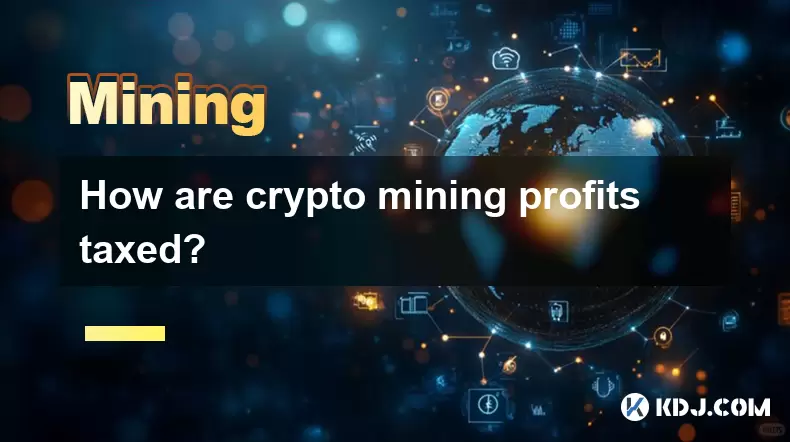
How are crypto mining profits taxed?
Jul 14,2025 at 12:28am
Understanding Cryptocurrency Mining and TaxationCryptocurrency mining involves validating transactions on a blockchain network and earning rewards in ...
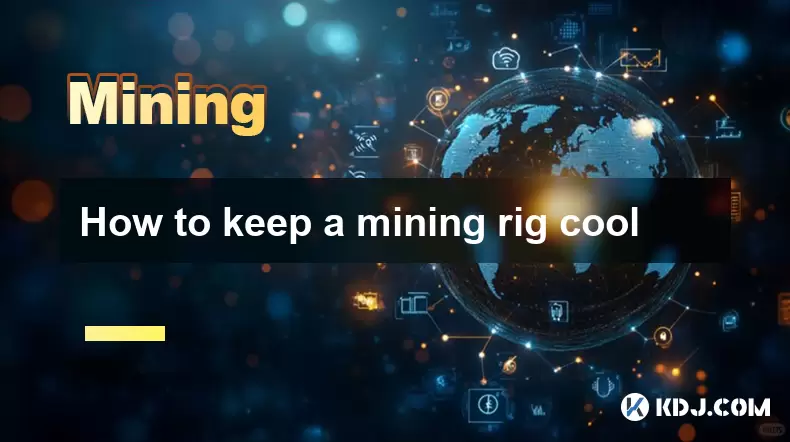
How to keep a mining rig cool
Jul 12,2025 at 01:42pm
Understanding the Importance of Cooling in Mining RigsCryptocurrency mining is an intensive process that places heavy demand on hardware components, p...
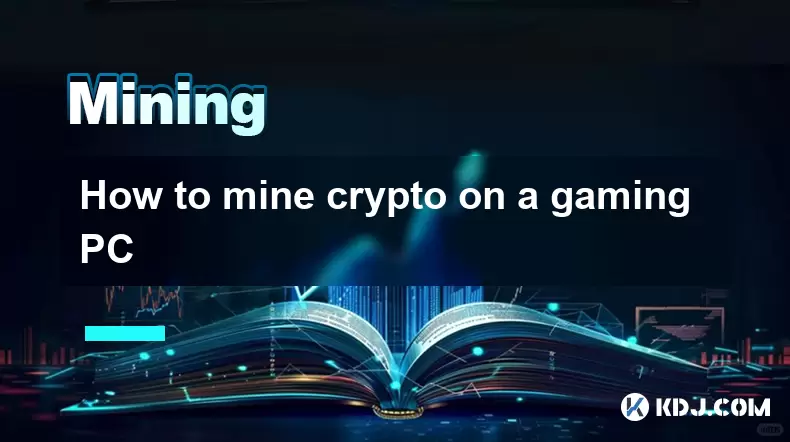
How to mine crypto on a gaming PC
Jul 16,2025 at 12:00pm
What is Crypto Mining on a Gaming PC?Crypto mining involves using your computer's processing power to validate transactions on a blockchain network. A...
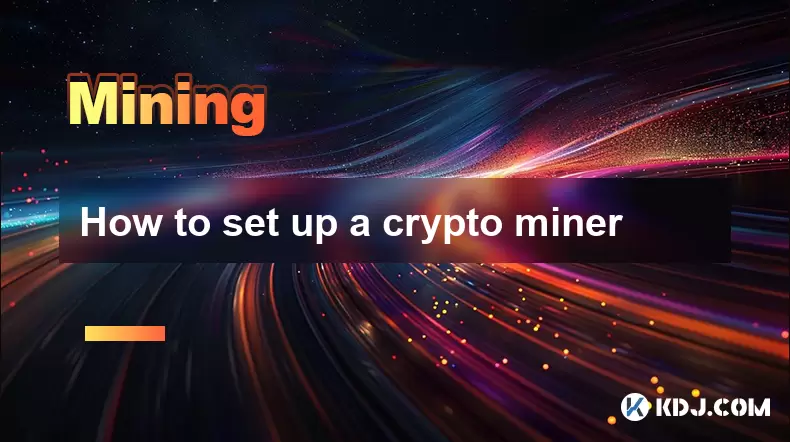
How to set up a crypto miner
Jul 16,2025 at 09:14am
Understanding Ethereum Gas Fees: What Are They and How Do They Work?Ethereum gas fees are a fundamental aspect of the network, representing the cost r...
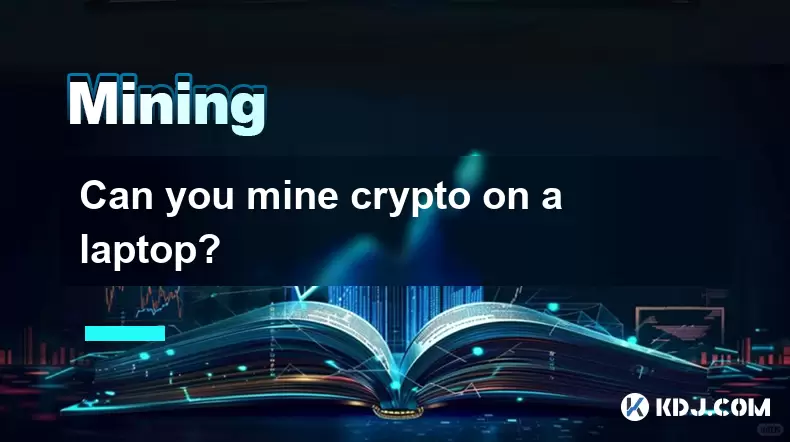
Can you mine crypto on a laptop?
Jul 16,2025 at 02:21am
Is It Feasible to Mine Cryptocurrency on a Laptop?Mining cryptocurrency on a laptop is technically possible, but feasibility depends heavily on the ha...
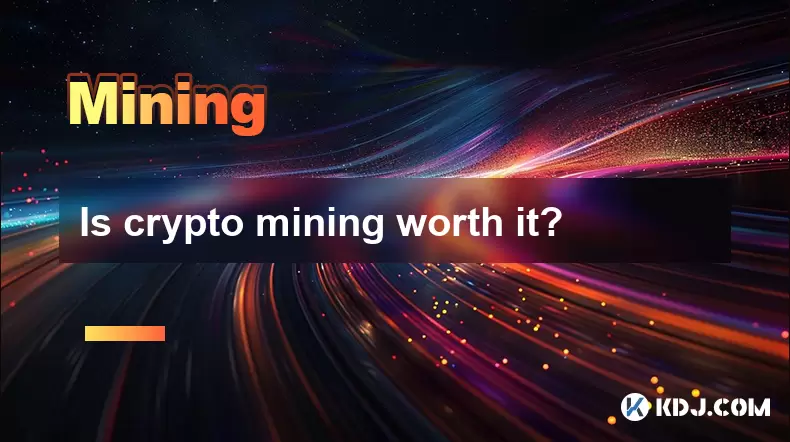
Is crypto mining worth it?
Jul 16,2025 at 01:21am
Understanding the Basics of Crypto MiningCrypto mining refers to the process of validating transactions on a blockchain network by solving complex mat...

How are crypto mining profits taxed?
Jul 14,2025 at 12:28am
Understanding Cryptocurrency Mining and TaxationCryptocurrency mining involves validating transactions on a blockchain network and earning rewards in ...

How to keep a mining rig cool
Jul 12,2025 at 01:42pm
Understanding the Importance of Cooling in Mining RigsCryptocurrency mining is an intensive process that places heavy demand on hardware components, p...

How to mine crypto on a gaming PC
Jul 16,2025 at 12:00pm
What is Crypto Mining on a Gaming PC?Crypto mining involves using your computer's processing power to validate transactions on a blockchain network. A...

How to set up a crypto miner
Jul 16,2025 at 09:14am
Understanding Ethereum Gas Fees: What Are They and How Do They Work?Ethereum gas fees are a fundamental aspect of the network, representing the cost r...

Can you mine crypto on a laptop?
Jul 16,2025 at 02:21am
Is It Feasible to Mine Cryptocurrency on a Laptop?Mining cryptocurrency on a laptop is technically possible, but feasibility depends heavily on the ha...

Is crypto mining worth it?
Jul 16,2025 at 01:21am
Understanding the Basics of Crypto MiningCrypto mining refers to the process of validating transactions on a blockchain network by solving complex mat...
See all articles

























































































